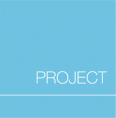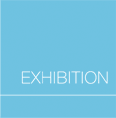|
Cloth & Culture NOW
the artists - Outi Martikainen, Finland
I am a Finnish textile artist
living and working in Helsinki. I took my Master’s degree
in Art at the University of Art and Design Helsinki in 1999. I
also studied for a term in Berlin, and in The Hague.
I work with textile artworks in my own studio. I have participated
in exhibitions in Finland and abroad. I have also worked on numerous
architectural projects with Professor Antti-Matti Siikala at Sarc
Architects Ltd.
For my Masters dissertation at the University
of Art and Design I investigated the use of images in furniture
fabrics. The figurative motifs on the upholstery fabrics were
not as typical as decorative, coloured plant motifs. A work commissioned
by the Nordic Institute for Contemporary Art (NIFCA); the design
for the upholstery of their office and conference-room chairs,
plus the creation of the overall ‘look’ for the conference
room, gave me a chance to explore the issue in practice. I took
on the job thinking I could combine design and art in the final
implementation. After all, the commission was from an institution
involved in contemporary art.
The fabric for the conference-room chairs was given the theme
of Nordic collaboration, which I wanted to depict using the face
of the current head of government/ruler of each of the Nordic countries.
When you enter the room or leave it, it is not empty, rather, the
faces on the chair backrests stay behind to converse around the
table. By creating compositions with faces situated asymmetrically
in the picture area I tried to add more life to this impression.
The images were woven on a computer-controlled Jacquard loom,
combining several weft threads of different colours, so as to make
it possible to create the required shades, echoing the surrounding
nature and built environment. The shadows on the faces are woven
using a variety of structures, so that the cloth acquires a subtle
structure. No other pictorial or ornamental surface was introduced
into to the conference room other than a soft, light-green rug.
The atmosphere of the room remained calm and yet exciting, due
to the contrast between the empty space and the surprising character
of the visual motif.
I saw this commission as a major signpost
to my later way of working, in which it has been important to
get acquainted with the space and those who use it, while also
listening to their opinions in the ideas phase. I never place
myself at a specific point on the designer-artist axis. The ideas
on which my works are based can come up at any time, in any situation,
from the storehouse of memory and from my emotional-experiential
memories. The ideas are rooted in these same sources. If I don’t have a commission on the
go and don’t have that to react to, I don’t stay in
a neutral state for long, not thinking about anything special to
do. Rather, a material or a recollection can start off a process
in which the material finds a theme and a method, and I then set
about following that.
The working process that I go through with architects very much
parallels my own way of coming up with ideas. Instead of free association,
we sit down for a while and sound each other out. What we have
seen? And what we have noticed? Frequently, underlying all this
is the first sketch of the building, the disposition of masses.
The architect often associates this with a form, which can then
further prompt images of the structure of the surface. When these
slight hints, these flirtations, have been thrown around every
which way, I return to my studio and let the ideas freely associate
with my stock of experiences and emotions. I make several sketches
and freeform material experiments. I make small-scale models and
1:1 material experiments. The most important thing at this stage
is that there is sufficient time for free association. This also
often helps to rule out superfluous proposals.
One exceptionally sensitive phase is showing
people these sketches, and yet keeping the work open to changes.
At the same time, you have to be prepared to discuss the ideas
presented and take any comments on board. You then move forwards
in the chosen direction and mould the idea into its final shape.
If, for example, it involves a silk-printed pattern on the glass
of the façade, this
means grinding the pattern, so that it will work as well as possible
as an unbroken surface, while allowing for the technical limitations.
The work on architectural projects that I have described is thus
highly conversational. One interesting aspect is learning to see
the different solutions to problems as equal. My own interpretation
reflects my own likes and dislikes, which are affected by my own
experiences. But when I listen to the interpretations, in this
case, of my partner in collaboration, the architect, my own experiences
can be enriched, and consequently the work develops like a game
in which a ball goes from one side to the other. The end result
here is a complete whole welded together by many different authors.
It is especially valuable if, as the project progresses, we have
been able to answer any questions about the fundamental aspects
of the idea, and to hold onto them under pressure of the technical
or structural solutions. You might never be able to or have to
discuss so much about the mode of artistic expression when you
are working alone.
In all of these architectural projects
I have allowed my interest in textiles to emerge in a way that
suits each particular task. The silk-printed façades reflect
my interest in the graphic surface, which is also fascinating
in the structures of fabrics. In the felt panel I did at the
University of Oulu we can see the structure characteristic of
a piece of knitting, magnified.
The process of producing the dreamlike
works, which I often see as being potentially already ready made
in the space, does not differ a great deal from the collaborative
projects I described above. I call them dreamlike because they
bubble up into my consciousness, often when my head demands that
I rest and think, close my eyes and arrange combinations out
of unconnected motifs. I am a researcher of materials and am
always interested in touching and feeling. That is why surfaces,
structures and the feel of fabrics have stayed in my mind ever
since my childhood. My grandmother’s generation
was the last to make almost all the textiles needed in the home
itself. My earliest memory of this is the bus journey from Helsinki
to my grandmother’s in Jyväskylä at the start of
every summer once the school holidays had started.
The morning after we arrived, we set off
for the draper’s,
where we bought cloth and other necessaries for new summer outfits.
At home grandmother sewed frocks, trousers and hats, too, on an
old foot-pedal Singer while my sisters and I sat under the sewing
machine table impatiently waiting for the finished clothes.
Sheets were sewn on the same machine, from a large bolt of cloth.
The monograms transferred onto the sheets with tracing paper were
then written with muslin thread
The crocheted bedcovers particularly stayed in mind. They were
made by sewing little pieces together. The pieces were almost the
same for everyone, my aunts and their women friends. Joined together
they formed a decorative surface. The crochet work was also highly
communal. If they had finished their own cover, the friends crocheted
pieces for each other, and in the end everyone had their own bedcover.
In homage to these generations who made their own textiles themselves,
I crocheted a pixel image of my own grandmother. As the material
I chose stiff polypropylene thread. I have been in love with this
material, which is familiar from previous crochet works, because
of its light-reflecting, and on the other hand its light-absorbing
properties. Because of its large size, it would also be possible
to mount this work on an outside wall. The polypropylene thread
that I use was intended for the upper section of fishing nets,
and so can withstand the effects of the weather.
The work progressed slowly, a piece at a time. I crocheted pieces
here and there, for instance, in the park where I take my youngest
to get fresh air. The completed work contains about 400 pieces
sewn together into three sections.
In the crocheted sculptures that I made previously I investigated
the colour and properties of snow.
In the sculptures I used white polypropylene rope to depict the
colourlessness of snow. Like snow, the polypropylene rope that
you can buy, is twisted together from colourless plastic film.
And like snow, when gathered together, it looks white.
The sculptures Frozen 1 and Frozen11 depicted
sunbathers frozen on a beach without any clear shapes. The sculptures
resemble some intermediate form between human and animal. I once
spent a whole winter on an island just off Helsinki amazed at the
different types of the snow as the weather changed. In the stone
and brick walls of the old fortress the frost, at times, created
a landscape like a fairytale castle. In the summer, the island
is taken over by sunbathers and daytrippers. Then, once school
has started and the summer holidays have ended, the island is left
to its own devices until the next summer. These two crocheted figures
evoke this summer period of laughter and joy, and of lying out
in the sun. They are frozen, waiting for the revitalising heat
of the sun, like the Finns, who since the beginning of time have
been accustomed to curling up indoors during this period of cold
and darkness.
Another series of works that arose out
of the effects of the local environment is the crocheted rug
work that I made at an international workshop in Latvia for the
garden of the home of the national poet, Rainis. We Nordic and
Latvian artists came up with ideas for works that would be closely
connected with the garden, and which would be realised there
during the workshop. I noticed how nature was a strong presence
in Latvians’ lives; herons nested on house
chimneys, in the countryside people travelled by horse, old trees
were left in peace to twist and grow where they liked. The local
way of protecting tree trunks from the excessive heat of the spring
sunshine by painting the lower section of the trunk with white
paint inspired me to crochet rugs around the trees like lace collars,
using white string donated for the workshop by a string-twining
factory. The patterns came about by imitating the iron gratings
that I admired in Paris around the bases of trees. It was then
possible to sit on these rugs in the shade of the trees and read
a poem, or whatever.
On being invited to take part in the international Northern
Fibre 6 group exhibition, I did a work based on pictures I had
taken of landscapes during a journey I made one summer.
We always drive out to the country by car, along an old, narrow,
winding road, beside which we can still see untouched landscapes,
where nothing has changed for 50 years. We often stop somewhere
where cows are grazing in the landscape, where time seems to stand
still. I literally gasp for breath when I see this rolling terrain
and the little cottage and sauna standing behind it. Behind them
is a forest rising into the sky. The landscape is reminiscent of
a genre painting, its unbroken peace and stillness spring form
the harmonious composition.
I have embroidered the outlines of this landscape in threads of
different colours and thicknesses onto a piece of polyester felt/blanket.
The felt was then heat-moulded industrially into panels, from which
the picture was made. I chose the old-fashioned tones of embroidery
threads to depict this archetypal mood.
The work with the piece of polyester felt
was a continuation of the polyester-felt panels made in the architectural
projects. Because moulding work with a three-dimensional design
is expensive, I set about experimenting with what can be done
with a simple shape and pre-working of the felt. The simple box
shape of the embroidered panels reminds me of the 1960s modernist
aesthetic of my childhood home. Furnished with Alvar Aalto’s rational, simplified forms,
our home represented an enormously powerful contrast with my grandmother’s
colourful, kaleidoscopic Karelian home with its cuckoo clock and
lace curtains. From my childhood home I also remember the big windows
and the lightness, which I myself very much see in these pieces
of embroidered polyester felt. This lightness can be seen in my
attempt to make the mood into an image, with masses and structures
that are as thin as possible, like a landscape traced on the retina
of someone in a passing vehicle.
For the ‘Kunnon tunteet’ (proper/good
feelings/sensibilities/feeling time/the proper feel) exhibition
at Villa Roosa in Orimattila this year I made a crocheted work
out of rag-rug wefts cut out of old clothes that I found in an
attic in the countryside. The work had its starting point when
I noticed on the walls of our cottage crocheted wall decorations
reminiscent of carved distaffs. Once I had spotted these wall
decorations, they began to leap into my vision in local flea-markets
and from the walls of other homes that I visited. These distaffs
were often crocheted, lacy monstrosities made of coloured woollen
yarn running round the circular shape. I nevertheless became
enchanted with them, because they replicate the original so clearly,
with skilful crochet work.
During my youth, all the beautiful kitchenware and other implements
hand-made in the cottage itself had been taken to be stored in
the granary when plastic replaced these beautiful objects, since
it was more beautiful and more practical. At that same time, the
beautiful carved distaffs may probably even have found themselves
under a casserole dish, as useless reminders of the bad old days.
Said out loud with varying accents, the title of the exhibition Kunnon
tunteet can have various meanings in Finnish. For me, when
spoken, this pair of words always involuntarily gets accentuated
to mean ‘kun on tunteet’ (when there are
feelings). In my crocheted distaffs I wanted to depict the fire
of emotions that I felt for the woodchip surface carved by the
distaff maker. These objects were, after all, often wedding presents
given by the groom to the bride, and hence intended for a carefully
selected individual. The distaff that I wove out of rug rags
is also full of smells and feelings; reminders of summers spent
in the country.
In the spring of this year, I spent some
time in the National Board of Antiquities’ Archives for
Prints and Photographs, going through Finnish traditional craftwork.
Finnish innovativeness and use of frugal materials inspired my
admiration. I noticed with many of the objects how they had inventively
set about looking for material in nature as the starting point
for the shape of the object. The intended use was the determining
factor, then came the decoration. The Finns go as they always
have, to the forest when they needed anything. How unbeatable,
for example, were the objects made of birch bark; the shoes,
the musical instruments, the original form of the rucksack, the
birch-bark knapsacks, and all manner of storage containers.
My journey of discovery into the innovation
that sprang from Finnish nature, for example, inspired by specific
objects, led to a series of works that had been requested for
the Finnish Association of Designers Ornamo’s joint exhibition
for the prizewinners of the year from its various member organisations
in October 2006, myself representing Textile Artists TEXO as
textile artist of the year 2006.
I wove a complete work out of bread-bag
fasteners collected by myself and my friends, the theme being
personal identity as a designer. Collecting the bread-bag fasteners
began from the pure irritation prompted by the amount of material
that had to be thrown out of the kitchen by a big family. So
many different interesting shapes of plastic, metal cans, bags,
bottle tops and so on began to accumulate on the edges of the
draining board once I did not want to throw them out. I thought:
I am a bad designer if I can’t come
up with some more sensible use for them. A lot of time and trouble
had already gone into the design of the individual packages. Thus,
these bread-bag fasteners, too, got their own pot, in which we
put them to wait for a better use than being thrown away. On impulse
I wove them into the jämäpala of a metal supporting framework
that I once used in my modelling work. The resulting surface was
reminiscent of the black-and-white graphic surface of a birch trunk.
For the first work made out of bread-bag fasteners I wove patterns
from the surface of rye bread into a shape that resembled the base
of a bark bread basket.
Birch means a lot to Finns and has always
been the Finns’ leipäpuu (‘bread
tree’). Thus, the bread-bag fasteners represent our daily
bread through the dates marked on them. And the weave represents
our (bread tree) the birch, which like the spruce leans against
the walls of old cottages and has always been linked with the Finnish
landscape.
The shoes that I wove from bread-bag fasteners
in the shape of the traditional birch-bark shoe, and the horn
like a bark horn, reflect well my attitude to tradition and the
present day. These objects were also my comments on the theme ‘myself as a
designer’. I need the horn to keep in touch and proper shoes
to stay upright and to go forwards. I work locally in each habitat,
in an awareness of my cultural heritage. Under the influence of
other cultures I am settling down outside of my own habitat. My
own persona is my signature, which is affected by everything I
experience.
.
FINLAND
|









